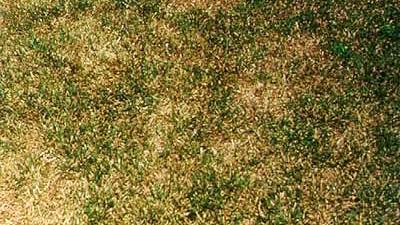
An all-over or mottled pale green to golden yellow color in established lawns may be the result of iron or nitrogen deficiency. Lawns with severe deficiencies may exhibit chlorosis, (yellow streaks form parallel to leaf veins). Long-term nutrient deficiencies result in overall thinning and decline of the lawn.
Maintain adequate fertilizer levels to avoid nutrient deficiency. Most lawn grasses need to have some nitrogen added annually in order to insure proper growth and resistance to pests. If soil testing indicates adequate levels of phosphorous and potassium, use a fertilizer that has a low percentage of these two nutrients.
Fertilizer packages are labeled with three numbers that indicate the percentage by weight of the three nutrients most essential to plants. The order is always nitrogen (N), phosphate (P205), and potash (K20). Nitrogen promotes overall grass shoot growth. Phosphate supplies phosphorus, which promotes strong root growth. Potash supplies potassium and helps grass withstand stresses such as drought or disease.
